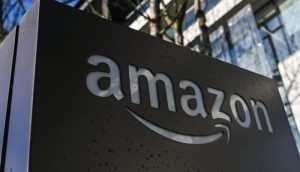New Rogers Media president Rick Brace offered logic into the industry’s never-ending desire to reach millennials at yesterday’s Canadian launch of Viceland, the linear specialty channel the two media companies are bringing to market next February.
“We were not alone in having a void in reaching millennials,” says Brace of the Canadian media landscape. “Guy Laurence recognized that when he came in and created the Vice partnership. That was the initial way of addressing it. And the thing is, 18-to-34 year-olds become 18-to-49 year-olds and then 25-to-54 year-olds. And all those groups are important to us.”
The companies partnered last fall in a $100 million deal, and yesterday officially unveiled the Vice Canada studio along with plans for Viceland, which was also announced in the U.S. earlier this week. In Canada the channel will be a rebrand of Rogers Media’s bio and in the U.S. it will take the place of H2. Last year bio reported 1.9 million subscribers, according to the CRTC’s specialty channel report.
In order to create content for Viceland, Vice Canada has grown its team from 20 staff last year to 150, with plans to expand the team to 180 for the winter launch.
Company co-founder Suroosh Alvi says he first pitched the idea for a Vice Media channel about 12 years ago. A couple of meetings where potential partners “laughed at me” sent him and his team back to the drawing board. But now, after eight years of making digital content, he says Viceland will have the scale and quality to stand out.
Content on the channel will include an initial set of nine Canadian original productions, including Abandonment Issues, Dead Set on Life, Payday, Shroom Boom and the Alvi-hosted Terror, as well as U.S. productions like Gaycation with Ellen Page and Black Market with Michael K. Williams (The Wire).
Canadian productions produced for Viceland will also be shown in the U.S., says Alvi, noting there are currently about six shows earmarked for cross-border airtime.
Viceland will be monetized through a mix of traditional and branded content marketing programs, says Brace, who wouldn’t expand further this far out from the launch. When the channel was rolled out in the U.S. earlier this week Vice co-founder Shane Smith said the launch gives his team an opportunity to be at the forefront of shifts to TV advertising. In Canada ad sales will be shared between Rogers and Vice.
“We will test new and innovative monetization strategies placing Viceland at the pointy tip of the spear of the rapidly changing terrain of TV advertising,” Smith said in the release on the U.S. launch.
Bruce Baumann, managing director, OMD, says the opinionated and rough-edged content is well suited to the intended target, so Rogers and Vice are unlikely to offend them with their ad sales strategy.
“I think they want to partner with advertisers, but in context, not in a ‘sell-out’ way, as that would not be a good fit with the dare I say, cynical viewers they’re focused on reaching,” he says.
Despite the incoming pick-and-pay specialty changes, Brace said there was “no hesitation” in rebranding its bio channel to launch Viceland with Vice Canada. Alvi says the brand’s value to marketers is the aforementioned millennial audience.
“Because we have such a loyal, faithful and trusting audience,” says Alvi. “We kind of have a lock on the group and advertisers and agencies know that. My partner Shane [Smith] likes to say the target is the most sophisticated bullshit detector in the world. That’s why we can do what we do, because they trust us.”
Image (left to right): Suroosh Alvi, co-founder, Vice Media and Rick Brace, president, Rogers Media



















